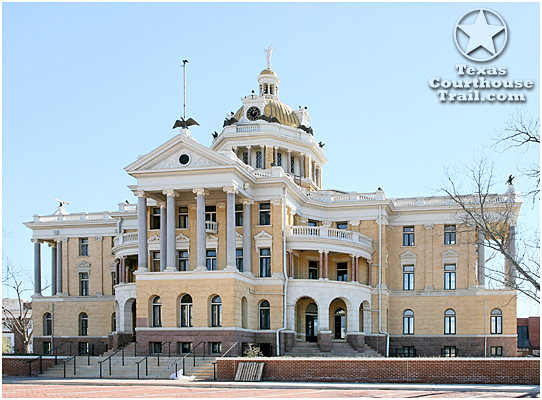Harrison County lies in the northeast portion of Texas, bordering Louisiana. Composed of natural resources such as oil and gas, Caddo Indians inhabited the territory and maintained an agricultural lifestyle. The Caddos died out in the area through European diseases and violence. After the Texas Revolution, Harrison County was established in 1842. The county's namesake is Jonas Harrison, a member of the Texas Revolution. Marshall is the county's seat and most populous city. The founders off Harrison County consisted of peoples from other southern states who introduced, among many traditions, slavery into the area. 
Harrison County voted for secession and joined the Confederacy during the Civil War, contributing a large number of soldiers to the cause. At the end of the war, the county witnessed the introduction of Reconstruction legislation. Like many other southern states during Reconstruction, the people of Harrison County vehemently objected to the loss of their slaves and found ways to enforce segregation in society.
After the war, the county's economy maintained its agricultural base from 1880 until 1930. During this period, cotton production remained the top source of income, with production increasing dramatically. Harrison County benefited from an above-average transportation system via the Southern Pacific Railroad and the Texas and Pacific Railway companies. From the 1930s onward, the county transitioned to a non-agricultural economy, and the advent of vehicles opened up the area to a mechanized workforce. The oil industry supported the county's prosperity into the current century.
Museum/Historic Site
- Harrison County Historical Museum
- Longview Museum of Fine Arts
- Michelson Museum of Art
- R. G. LeTourneau Museum
Documents/Resources
- Books
- Maps; Aguifers; Geologic; Census
- Microfilm
- County historical herald (Journal)
- Geological survey series; Hydrogeologic investigations; Water quality
- Floyd-Pate Collection (Manuscript)
- Occupational Compensation survey
Text: http://www.tshaonline.org/handbook/online/articles/hch08 Handbook of Texas Online, Texas State Historical Association.